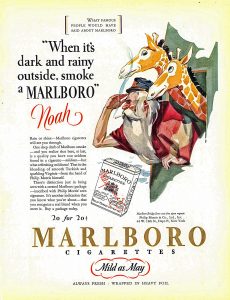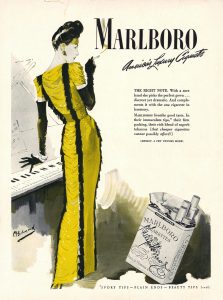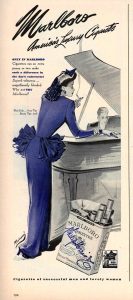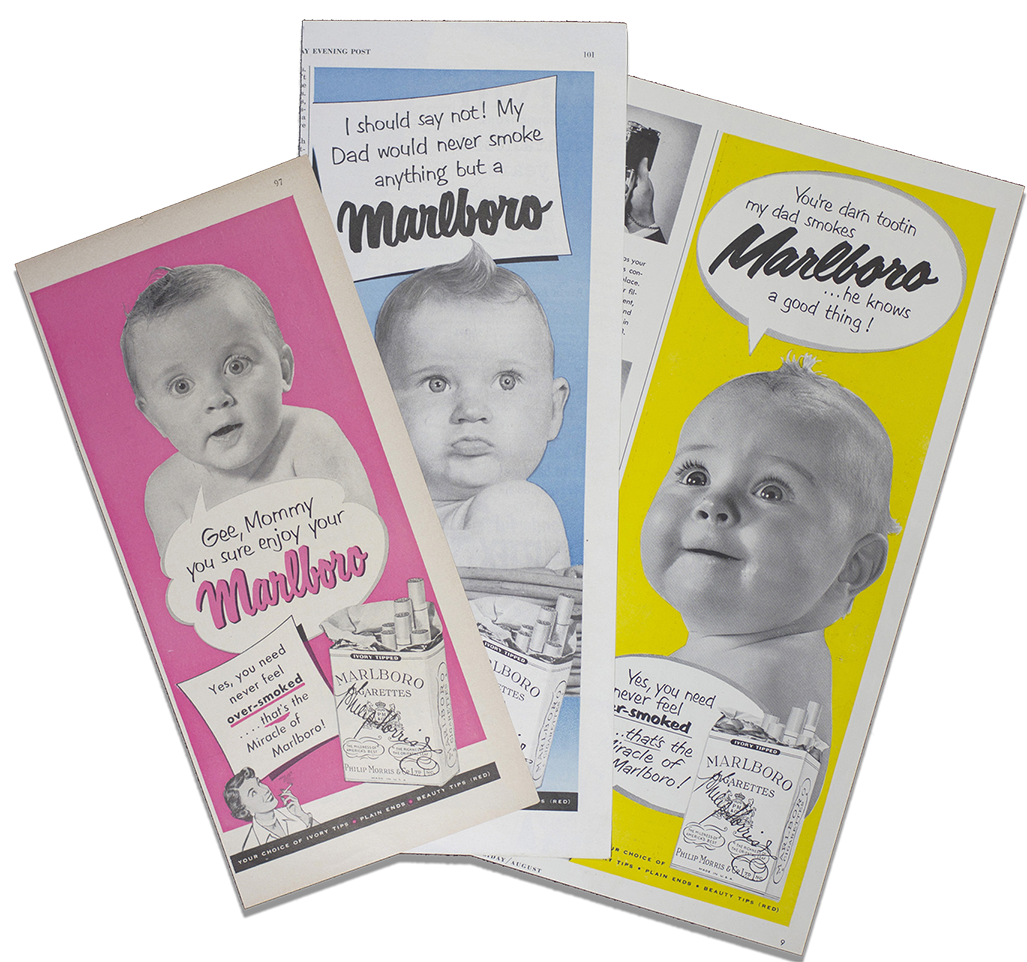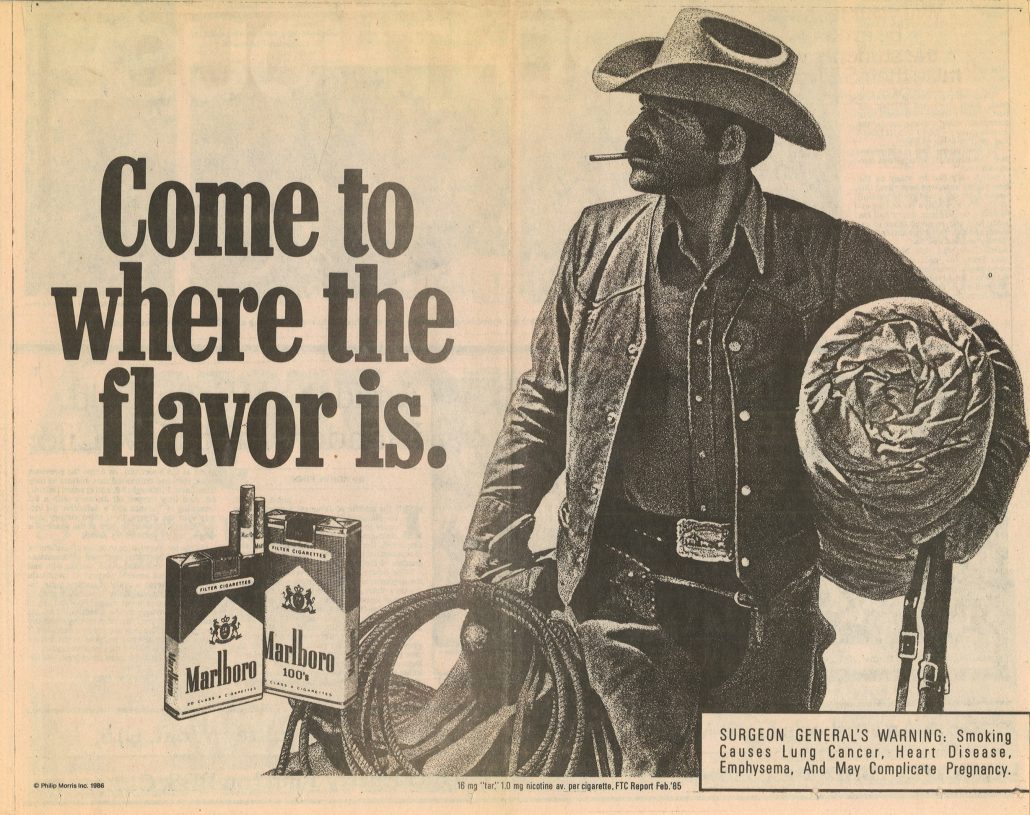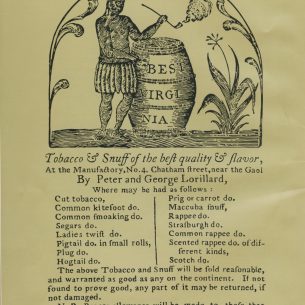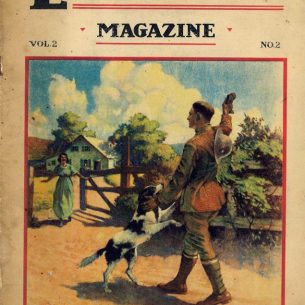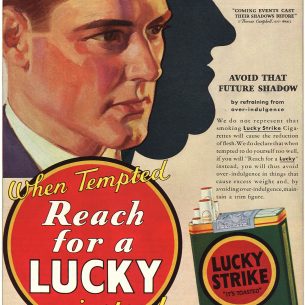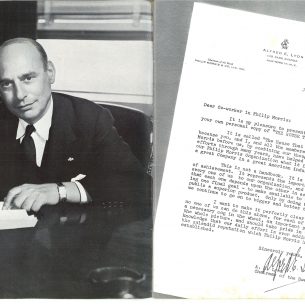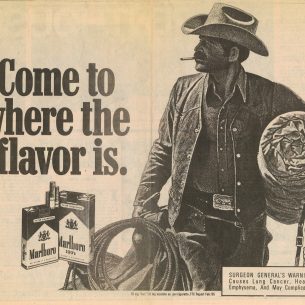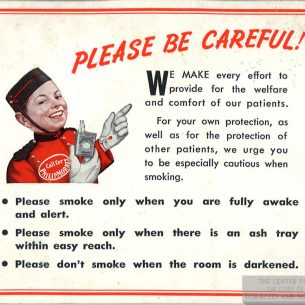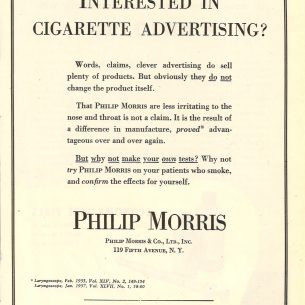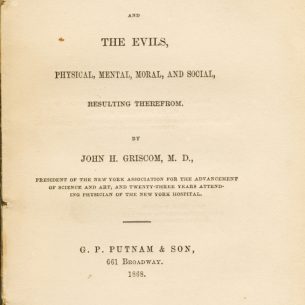Big Tobacco in the Big Apple
How New York City Became the Heart of the Tobacco Industry
…and Anti Smoking Activism
The Marlboro Story
From Mild as May to Macho (2:52)
From Mild as May to Macho - Transcript
The success of Philip Morris during the 20th century was brought about by the marketing of a single brand, Marlboro. Marlboro was introduced in the 1920s as a woman’s cigarette with advertising slogans such as, “Mild as May” and “Red tips for your pretty lips.” In the 1950s, under the direction of marketing expert George Weisman and the advertising firm of Leo Burnett, Marlboro achieved enormous appeal when the company emboldened the package’s design with a medallion like chevron and revamped the image to one of rugged cowboys in the wide-open spaces, television commercials for which were accompanied by the theme song from the film The Magnificent Seven.
At the same time undoubtedly in response to the growing scientific evidence that cigarette smoking causes lung cancer and other serious health problems, Philip Morris added a filter to Marlboro and its other brands. Today, more than 98% of those who smoke by filtered cigarettes, which have no health protection over other brands.
Joseph Coleman was president of Philip Morris from 1957 to 1978 when Marlboro’s popularity skyrocketed. By 1976., it was the largest selling cigarette in the United States and today, Marlboro is the top-selling cigarette in the world. In the 1960s, Philip Morris sponsored, many of the most successful television programs ever, including Perry Mason the Dobie Gillis Show, Rawhide, the CBS News with Walter Cronkite, and the National Football League telecast.
When cigarette ads were banned by Congress from television in 1971, Philip Morris created and sponsored sporting events, such as the Marlboro Grand Prix auto race, The Marlboro Cup thoroughbred horse race, and the Virginia Slims women’s tennis circuit, the televising of which successfully circumvented the broadcast ban on cigarette advertising. George Weissman, who became chairman in 1978, stepped up Philip Morris’s sponsorship of fine arts and the company’s logo began appearing in association with operas, ballets, and art exhibitions. The company was the first cigarette manufacturer to recognize the need to shape its identity through diversifying. So, in 1957 it had purchased a producer of flexible packaging, it acquired Miller Brewing Company in 1969 and the 7-Up Bottling Company in 1976. Moving aggressively into consumer-packaged goods, Philip Morris acquired General Foods in 1985, and Kraft Foods in 1988 by means of hostile takeovers. Such diversification enabled Philip Morris to regain clout with television networks, which were covetous of the advertising dollars for the company’s many food products.
By 1990 in an effort to further downplay its identity, as primarily a cigarette maker, Philip Morris had dropped the word tobacco from its name in 2002. The company renamed itself, the altruistically sounding, Altria. Today Marlboro accounts for nearly forty percent of all cigarettes sold in the United States, and Philip Morris’s market share of total U.S. cigarette sales is nearly fifty percent.
“When it’s dark and rainy outside, smoke a Marlboro”
Magazine advertisement featuring biblical figure Noah
1928
“Marlboro, America’s Luxury Cigarette” [1 of 2]
Advertisement featuring a fashionably dressed woman
Life
1940
“Marlboro, America’s Luxury Cigarette” [2 of 2]
Advertisement featuring a fashionably dressed woman
Life
1940
“Merely a Penny or Two More”
Marlboro magazine advertisement
1949
“Mommy’s Marlboros”
Advertisements
Marlboro
Philip Morris
Circa 1950s
Before being promoted in the 1950s as a symbol of manliness, Marlboro had been marketed for three decades as a woman’s cigarette, with tag lines such as “Mild as May” and “Red tips to match your pretty red lips.” The rainbow of Marlboro ads below (from the popular family weekly magazine The Saturday Evening Post) comes from the post-World War II baby boom era when images of beaming infants adorned advertising campaigns for countless products.
Learn more about the targeting of children by tobacco companies and efforts to protect them in our exhibition: Kids Candy and Cigarettes
“Marlboro Country”
Magazine advertisement by Philip Morris featuring the New York City skyline
1963
“The Marlboro Story”
Philip Morris promotional pamphlet
1970
“Marlboro Lights”
Magazine advertisement by Philip Morris
1988
“The Tale of the Marlboro Brand” (2:13)
Video clip
Leo Burnett, advertising executive responsible for the creation of the Marlboro Man,
1972
“Come to where the flavor is.”
Advertisement by Philip Morris for Marlboro cigarettes
The New York Times
1986
Explore the First 200 Years with the Links Below
Or use the navigation bar to visit other sections of the Exhibition



